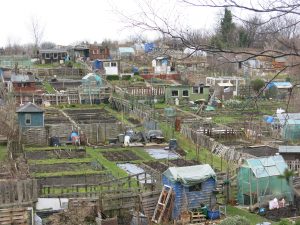Visiting public to botanic gardens such as the Royal Botanic Garden Edinburgh (RBGE) maybe drawn to these unique spaces for many reasons. However, whatever the motive it is hoped that for the enlightened visitor they will appreciate the intrinsic differences between a botanic garden and other green spaces in the city.
On entering the Garden it should become evident that one has arrived in a world of ultra-high plant diversity; in the case of the RBGE Inverleith site the visitor is surrounded by over 36,000 plants representing nearly 8,000 species from a staggering 163 countries. The botanic garden site is dynamic, a highly specialised green space which acts like a flux for the river of biodiversity – suspended between the gains from the plant-rich Himalayas and the imposing Andes of South America (just two areas from where RBGE staff collect plants) and the inevitable loss to the RBGE compost heap.
On an annual basis just over 2000 new plants come into the system to start their fateful journey, which depending on the nature of the species can take between one and 192 years (the age of the Sabal Palm – RBGE’s oldest living tree). From the moment this green river of biodiversity enters the system the process of exploitation begins by botanist, horticulturists and educationalists who revel in the extraordinary range of research opportunities. I and my colleagues have the task of squeezing every piece of information from these plants in order to feed this into the ever-growing treasure trove of knowledge which underpins our ability to conserve native habitats and the plants they contain. We must never forget the fundamental facts that the air we breathe the clothes we wear, the food we eat, the water we drink, and about 80% of the medicines we use are all dependent on plants. Man’s survival on this planet is integrally linked to the survival of plants!
One fundamental area of research for RBGE is to identify and document the plants that flow along this river of biodiversity. For over 200 collections currently being grown, they await to be described as new to science and this is an indication of the potential amount of plant life still to be discovered, described and utilised. But none of this and indeed none of the other research relating to living plants could possibly be undertaken without the cultivation skills of those who propagate and nurture the plants. Whether they care for plants in botanic gardens, public parks, garden centres, experimental stations, the agricultural industry or tend their quintessentially British allotments, this dedicated, green-fingered group of people have the accumulated knowledge and skills that are essential for human survival. They have the necessary skills to cultivate the plants we need for food and from which to develop medicines, but perhaps especially important, horticulturists are becoming increasingly vital for the cultivation of plants for restoring damaged natural habitats as a result of the ever-growing list of man-induced activities which are contributing to the demise of our environment. Climate change is now top of this list, and is considered by many to be a far bigger threat to mankind than terrorism.
To some it might be incredible to think that horticulturists, including the humble gardener, could play such a significant role and yet horticulture and related outdoor activities are still perceived as the sort of careers to follow if you can’t find a proper job! This perception is resulting in a skills shortage in horticulture and in a recent report compiled by leading horticultural bodies including the Royal Horticultural Society RHS, and the Institute of Horticulture (IoH), conclude that unless we tackle this problem immediately, then the UK will face a serious crisis in years to come.
It is worth reflecting on the futuristic film Silent Running set in the mid-21st century in which all plant life on Earth has become extinct and the last living plants from various eco-systems were housed in giant sealed domes aboard cargo ships. The ‘Valley Forge’ had just four crew members including one who had the knowledge and skills to tend the plants for their eventual return to earth for reforestation of the planet. This modern-day Noah’s Ark scenario is one in which I would use to illustrate the importance of horticulturists. In prioritising the human cargo for such a vessel I would not put woman and children first but instead those with the knowledge of how to grow plants which includes the humble gardener!
Martin Gardner
An abridged version of this was published in The Scotsman newspaper on 14 March 2015

